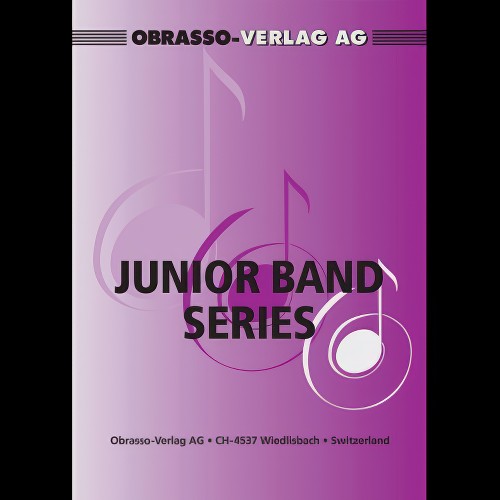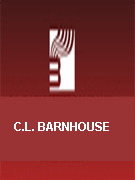Results
-
 £118.99
£118.99The Best of Earth, Wind & Fire
Earth, Wind & Fire was formed by jazz drummer Maurice White, whose aim was to mix various music styles to produce a unique sound. Combined with excellent song writing and fine performances this sound made Earth, Wind & Fire one of the most influential soul groups of the seventies. In subsequent decades they experienced varying success but this medley reflects the heyday of this legendary group. In his job as staff arranger with the Royal Marine Band of the Dutch Navy, Peter Kleine Schaars wrote many top class arrangements. The talent of the musicians in the band made it possible to write in such a way that they closelyresembled the original works. Consequently this medley shines just like the original versions by Earth, Wind & Fire. Four famous songs have been used: 'In the Stone', 'Got to Get You into My Life', 'After the Love Has Gone' and 'September'.
Estimated dispatch 7-14 working days
-
 £137.99
£137.99From the Highlands - Marco Pütz
Enjoying his travels in Scotland, Marco Ptz decided to compose a piece for wind band, based on Scottish folk songs. While in the airport at Glasgow, shortly before boarding his plane, Ptz bought a collection of folk melodies from all over Scotland that had been arranged for flute. At first he harmonized several melodies in his own style, then he began to alter the resulting pieces (especially rhythmically). Eventually Ptz added passages here and there and orchestrated the piece for wind band. Ptz's resulting composition is an educational work that is both enjoyable and appealing to players of all ages, although it was written with young bands in mind. From theHighlands is part of a project to increase the repertoire available to youth and school bands, both in quantity and quality; an important personal and musical goal for the composer. This is Ptz's third contribution of this sort to be added to the De Haske catalogue, following his successful Arrows of Lightning and Four Sketches for Band.
Estimated dispatch 7-14 working days
-
 £104.99
£104.99The Ultimate '80s Party Hits - James Taylor
Which are your favourite hits from the 1980s? There are certainly many answers to this question - but many responses are likely to contain these songs: Kool and the Gang's disco classic Celebration, Come On Eileen by Dexy's Midnight Runners, Whitney Houston's I Wanna Dance With Somebody and Total Eclipse of the Heart by Bonnie Tyler. These four numbers have been arranged by Peter Kleine Schaars as a fantastic '80s retro medley for concert band.
Estimated dispatch 7-14 working days
-
 £104.99
£104.99Praise to the Lord - Carl Wittrock
This composition, based on the hymn Praise to the Lord, is comprised of eight separate parts that can be played together as a concert piece or opening work. The A and B sections are different openings, C is four-part arrangement of the hymn, D is a solo for four saxophones, or two trumpets and two trombones, E is a calm intermezzo, F a solo for trumpet or cornet, and G and F finally are a majestic or peaceful closing section. How will you choose to present this piece on stage?
Estimated dispatch 7-14 working days
-
 £57.50
£57.50Hey, Hey We're the Monkees
Those madcap characters from TV's past have made a whole new audience, thanks to the Nickelodeon cable channel. Four of their biggest hits are combined in a fun-loving medley for developing bands. Includes: Daydream Believer, Last Train To Clarksville, I'm A Believer, and Hey, Hey We're The Monkees.
Estimated dispatch 7-14 working days
-
 £64.99
£64.99The Beatles - 1964!
The Fab Four exploded on the American music scene with a banner year of hits in 1964. This medley of Beatle favorites includes I Want to Hold Your Hand, And I Love Her and Twist and Shout. It was a good year!
Estimated dispatch 7-14 working days
-
£145.00
Four Weddings And A Funeral - Georg Friedrich Händel - Scott Richards
Entry Of The Queen Of Sheba
Estimated dispatch 10-14 working days
-
 £46.90
£46.90Four Little Pieces (Flexible Ensemble - Score and Parts) - Fernie, Alan
4 Part Flexible Ensemble and PercussionIncludes:After the RainE is for ElephantSleepy Dog BluesStarlight
Estimated dispatch 7-14 working days
-
 £79.20
£79.20Four Winds Overture (Concert Band - Score and Parts)
Overtura' is a uniquely original overture that has become a real favorite for many years. A perfect example of Mr. Huckeby's exceptional score and attention to detail. One of the best!
Estimated dispatch 7-14 working days
-
£102.99
The Quest - Bert Appermont
Quest implies "exploring" or "being in search of". This four piece work is a challenge to every fanfare or symphonic wind band. All groups in the orchestra have explicit parts in this composition that is reminiscent of film music. It can serve both for a concert and a contest.
Estimated dispatch 7-14 working days
